GRAS Accessories for Microphones
0,00 kr.
GRAS Sound & Vibration offers a wide range of standard accessories in the form of cables, adapters, windscreens and tripods for use in measuring set-ups.
GRAS Sound & Vibration offers a wide range of standard accessories in the form of cables, adapters, windscreens and tripods for use in measuring set-ups. These can be broadly split up under accessories for microphones, for preamplifiers, for outdoor microphones, for pistonphones and pinna simulators and accessories for ear simulators. Some are included with certain products, some are available as extras. All can be ordered individually. The brief descriptions given here as well as those on downloadable accessories sheet will help you to select what you need for your particular set-up. At all events, feel free to contact your GRAS partner if you need advice or further information.
GRAS Sound & Vibration also offers a wide range of special products and customised solutions. Our experience within the field of acoustics and vibration, combined with our short development time, enable us to provide innovative solutions to complex measurement problems in close co-operation with the customer. For a technical discussion of your measurement requirements, please contact your local representative or contact GRAS Sound & Vibration directly in Denmark.
GRAS 67TS Turbulence Screen Kit
The GRAS 67TS Turbulence Screen Kit is designed for aeroacoustic testing in solid-walled wind tunnels. By attenuating the hydrodynamic component of turbulence up to as much as 25 dB, the acoustic signals of interest can be identified and diagnosed with a much more reliable resolution. The flush-mount turbulence screen integrates the flush-mount and recessed mounting techniques with a special wire mesh into a single unit, and allows for adaptation of several mounting options.
The kit does not include a microphone set. The GRAS 67TS-CL-1 includes a GRAS 47BX 1/4″ Flush-mount microphone set.
A GRAS 1/4″ CCP Flush-mount Microphone Set can be attached to the turbulence screen assembly either with a “rubber band” (O-ring) or a holder plate of POM-material. The parts necessary for both methods are part of the GRAS RA0295 Turbulence Screen Accessories for Flush-mount Microphones. This kit must be ordered separately.
A GRAS 1/4″ standard microphone set can be attached to the turbulence screen assembly with a straight or an angled holder plate. These are part of the GRAS RA0296 Turbulence Screen Accessories for standard microphone/preamplifier. This kit must be ordered separately.
As “default” the complete assembly will fit in a flat wall with 4 mm thickness. A hole with diameter 44 mm must be provided. It is possible to attach the assembly using glue. For mounting with screws, the 67TS is provided with 4 holes with diameter 3.1 mm. You are always welcome to contact GRAS for advice or regarding customization.
GRAS AL0007 Clips for 1/4” intensity microphones
The GRAS AL0007 contains 2 clips both for side-by side mounting of 1/4″ microphones. One clip gives 12 mm spacing and the other gives 25 mm spacing.
The clips are provided with a hole for a 3 mm diameter screw. Alternatively the assembly can be attached to a GRAS RA0096 or AL0013 Tripod adapter by clamping one of the microphones.
This setup is intended for a pair of 1/4″ intensity microphones.
GRAS AL0013 1/4″ Microphone Holder, Stainless Steel
The GRAS AL0013 is an adapter for mounting a microphone set (microphone/preamplifier) on tripods having a standard 1/4” UNC-20 male thread. The adapter is provided with a clamp for attaching a 1/4″ diameter preamplifier. For minimum acoustic influence, clamp as close to the output as possible.
Design
The AL0013 is designed for a minimum acoustical influence. It is physically small and with smoth rounded surfaces.
Alternatives
The stainless steel microphone holder GRAS RA0096 is similar to AL0013 regarding usage, but is provided with possibility to adjust the microphone angle between 0 and 180 degrees in 45 degree steps. Another alternative is the non-metal microphone holder adapter GRAS AL0029. If a total flexibility regarding the angle is required, then consider the GRAS AL0003 which includes a swivel head.
GRAS AM0069 Windscreen for 1/2″ Microphones
The AM0069 contains 5 spherical windscreens specially designed and optimized for use with 1/2″ microphone sets for sound pressure measurements under free-field conditions, e.g. in situations where the wind comes from more and unpredictable directions. The windscreen is mounted by pushing it as far as possible over the microphone and preamplifier.
Design
When a microphone is placed in a laminar flow, turbulence is created which in turn results in unwanted pressure variations on the diaphragm. By using a windscreen these pressure variations are moved as far away from the diaphragm as possible.
Theoretically this supports a “the-bigger-the-better design”, but in practice it is a compromise between air speed reduction, practical size and self-induced noise. Self-induced noise is wobble-noise which is generated, when the windscreen starts moving around the microphone.
The GRAS windscreens are all size optimized and their special, open-cell foam structure and number of pores per inch2(ppi), are designed to resist a humid environment and at the same time not influence the sound pressure measurement result significantly.
Frequency dependent attenuation is to be expected if the windscreen gets wet. Therefore windscreens are not intended as rain protection of the microphone.
Alternatives
If longer duration of outdoor monitoring is required, we suggest that you look for the GRAS semi-permanent and permanent outdoor microphone solutions:
- GRAS 41AC-2 LEMO Outdoor Microphone with RemoteCheck for Community and Airport Noise
- GRAS 41AC-3 CCP Outdoor Microphone for Community & Airport Noise
- GRAS 41AC-4 LEMO Outdoor Microphone for Community and Airport Noise (0 V pol.)
If the turbulence reduction is not sufficient for your type of measurement, we suggest the intensity measurement technique that suppresses background noise effectively. GRAS has a wide range of 2D, 3D and wide-frequency intensity probes supporting both CCP and LEMO input modules, see GRAS Intensity Probes .
If you need to make sound pressure measurements in a well-defined laminar airflow, e.g. in a wind-tunnel, we suggest that you look for GRAS nosecones. Alternatively look for our surface microphones, our new flush-mounted microphone concept or our turbulence screen.
GRAS AM0071 Windscreen for 1/4″ Microphones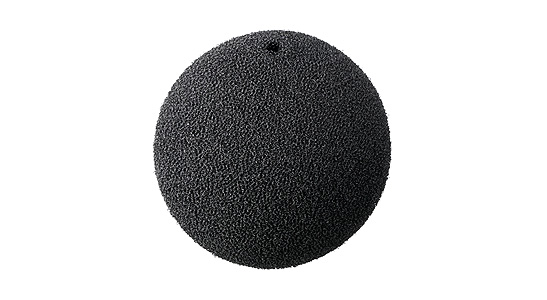
The AM0071 contains 5 spherical windscreens specially designed and optimized for use with 1/4″ microphone sets for sound pressure measurements under free-field conditions, e.g. in situations where the wind comes from more and unpredictable directions. The windscreen is mounted by pushing it as far as possible over the microphone and preamplifier.
Design
When a microphone is placed in a laminar flow, turbulence is created which in turn results in unwanted pressure variations on the diaphragm. By using a windscreen the pressure variations are moved as far away from the diaphragm as possible.
Theoretically this supports a “the-bigger-the-better design”, but in practice it is a compromise between air speed reduction, practical size and self-induced noise. Self-induced noise is wobble-noise which is generated, when the windscreen starts moving around the microphone.
The GRAS spherical windscreens are all size optimized and their special, open-cell foam structure and number of pores per inch2 (ppi), are designed to resist a humid environment and at the same time not influence the sound pressure measurement result significantly.
Frequency dependent attenuation is to be expected if the windscreen gets wet. Therefore windscreens are not intended as rain protection of the microphone.
Alternatives
If longer duration of outdoor monitoring is required, we suggest that you look for the GRAS semi-permanent and permanent outdoor microphone solutions.
If the turbulence reduction is not sufficient for your type of measurement, we suggest the intensity measurement technique that suppresses background noise effectively. GRAS has a wide range of 2D, 3D and wide-frequency intensity probes supporting both CCP and LEMO input modules.
If you need to make sound pressure measurements in a well-defined laminar airflow, e.g. in a wind-tunnel, we suggest that you look for GRAS nosecones. Alternatively look for our surface microphones or our new flush-mounted microphone concept.
GRAS AM0363 Windscreen for 1″ Microphones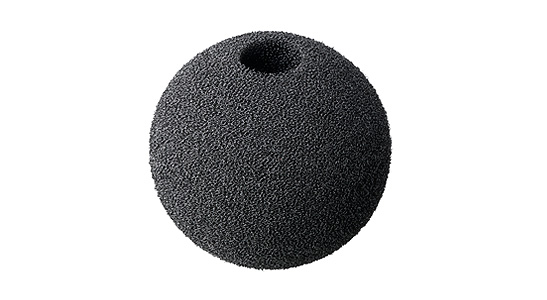
The AM0363 contains 5 spherical windscreens specially designed and optimized for use with 1” microphones for sound pressure measurements under free-field conditions, e.g. in situations where the wind comes from more and unpredictable directions. The windscreen is mounted by pushing it as far as possible over the microphone and preamplifier.
Design
When a microphone is placed in a laminar flow, turbulence is created which in turn results in unwanted pressure variations on the diaphragm. By using a windscreen the pressure variations are moved as far away from the diaphragm as possible.
Theoretically this supports a “the-bigger-the-better design”, but in practice it is a compromise between air speed reduction, practical size and self-induced noise. Self-induced noise is wobble-noise which is generated, when the windscreen starts moving around the microphone.
The GRAS windscreens are all size optimized and their special, open-cell foam structure and number of pores per inch2 (ppi), are designed to resist a humid environment and at the same time not influence the sound pressure measurement result significantly.
Frequency dependent attenuation is to be expected if the windscreen gets wet. Therefore windscreens are not intended as rain protection of the microphone.
Alternatives
If longer duration of outdoor monitoring is required, we suggest that you look for the GRAS semi-permanent and permanent outdoor microphone solutions.
If the turbulence reduction is not sufficient for your type of measurement, we suggest the intensity measurement technique that suppresses background noise effectively. GRAS has a wide range of 2D, 3D and wide-frequency intensity probes supporting both CCP and LEMO input modules.
If you need to make sound pressure measurements in a well-defined laminar airflow, e.g. in a wind-tunnel, we suggest that you look for GRAS nosecones. Alternatively look for our surface microphones or our new flush-mounted microphone concept.
GRAS AM0364 Windscreen for Array Microphones
The AM0364 contains 6 spherical windscreens specially designed and optimized for use with 1/4″ microphones in array configurations for sound pressure measurements under free-field conditions, e.g. in situations where the wind comes from more and unpredictable directions. The windscreen is mounted by pushing it as far as possible over the microphone.
Design
When a microphone is placed in a laminar flow, turbulence is created which in turn results in unwanted pressure variations on the diaphragm. By using a windscreen the pressure variations are moved as far away from the diaphragm as possible.
Theoretically this supports a “the-bigger-the-better design”, but in practice it is a compromise between air speed reduction, practical size and self-induced noise. Self-induced noise is wobble-noise which is generated, when the windscreen starts moving around the microphone. The size of AM0364 is choosen with consideration to reduce interaction between neighbor microphones in the array.
The GRAS windscreens are all size optimized for dedicated Array microphones and standard 1/4″ microphone sets mounted in array modules GRAS PR0001 & PR0002. The special, open-cell foam structure and number of pores per inch2 (ppi), are designed to resist a humid environment and at the same time not influence the sound pressure measurement result significantly.
Frequency dependent attenuation is to be expected if the windscreen gets wet. Therefore windscreens are not intended as rain protection of the microphone.
Alternatives
If you need to make sound pressure measurements in a well-defined laminar airflow, e.g. in a wind-tunnel, we suggest that you look for GRASstandard microphones combined with nosecones. Alternatively look for our surface microphones or our new flush-mounted microphone concept which can also be arranged in an array configuration.
GRAS AM0376 Windscreen for Intensity Probes
This windscreen fits “rugged Intensity Probes”. Refer to the information for the Intensity Probe regarding compatibility. The windscreen is mounted by pushing it as far as possible over the microphones and preamplifiers. The windscreen is provided with holes for the microphone preamplifiers.
Design
When a microphone is placed in a laminar flow, turbulence is created which in turn results in unwanted pressure variations on the diaphragm. By using a windscreen the pressure variations are moved as far away from the diaphragm as possible.
Theoretically this supports a “the-bigger-the-better design”, but in practice it is a compromise between air speed reduction, practical size and self-induced noise. Self-induced noise is wobble-noise which is generated, when the windscreen starts moving around the microphone.
The GRAS windscreens have all a special, open-cell foam structure and the number of pores per inch2 (ppi), are designed to resist a humid environment and at the same time not influence the sound pressure measurement result significantly. The shape of AM0376 is elliptical due to housing the microphones with the longest spacer.
Frequency dependent attenuation is to be expected if the windscreen gets wet. Therefore windscreens are not intended as rain protection of the microphone.
GRAS RA0001 Right-angled (90º) Adapter for 1/2″ microphone and 1/4″ preamplifier
The GRAS RA0001 is a right-angle adapter and is typically used in a Sound Intensity Probe (included with the phased matched 1/2″ microphones) where it is used together with the corresponding straight adapter RA0003. The RA0001 is also useful in situations where the microphone has to be flush mounted on a wall.
Alternatives
Right-angled adapter for a 1/2″ microphone and a 1/2″ preamplifier is the RA0190.
Right-angled adapter for a 1/4″ microphone and a 1/4″ preamplifier is the RA0006.
GRAS RA0003 Adapter for 1/2″ microphone and 1/4″ preamplifier
The GRAS RA0003 can be used with any standard 1/2″ microphone and 1/4″ preamplifier such as the GRAS 26AC. This adapter is typically used in a Sound Intensity Probe (included with the phased matched 1/2″ microphones) where it is used together with the corresponding angled adapter GRAS RA0001.
GRAS RA0006 Right-angled (90º) Adapter for 1/4″ Microphone and 1/4″ Preamplifier
The GRAS RA0006 is a right-angle adapter and is typically used in a Sound Intensity Probe (included with the phased matched 1/4″ microphones) where it is used with the corresponding straight adapter RA0007. The RA0006 is also useful in situations where the microphone has to be flush mounted on the wall.
Alternatives
Right-angled adapter for a 1/2″ microphone and a 1/4″ preamplifier is the RA0001.
Right-angled adapter for a 1/2″ microphone and a 1/2″ preamplifier is the RA0190.
GRAS RA0016 20 dB Attenuator for externally polarized 1/2″ microphones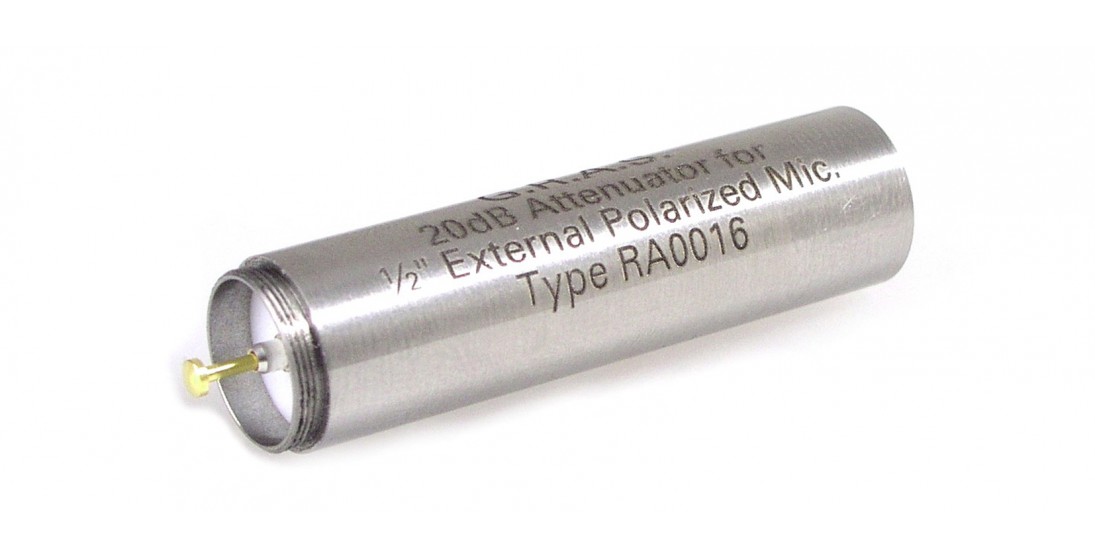
The GRAS RA0016 is a 20 dB attenuator for inserting between a 1/2″ microphone and preamplifier. It will attenuate the output signal of the microphone by 20 dB in order to avoid overloading the preamplifier. The RA0016 is useful when measuring very high sound pressure levels using a preamplifier with limited dynamic range. The RA0016 will work properly only with externally polarized microphones. For prepolarized microphones, use the RA0018.
Design
For precision measurements, the actual combination of microphone, attenuator and preamplifier should be calibrated with a precision calibrator like GRAS 42AA Pistonphone. The attenuation of the microphone signal is obtained by a capacitive voltage divider, and depends on both the microphone capacity and the preamplifier input impedance. The attenuation has been adjusted to 20 dB with a microphone with 20 pF capacity and with a typical GRAS preamplifier.
GRAS RA0017 Adapter for 1″ microphone and 1/2″ preamplifier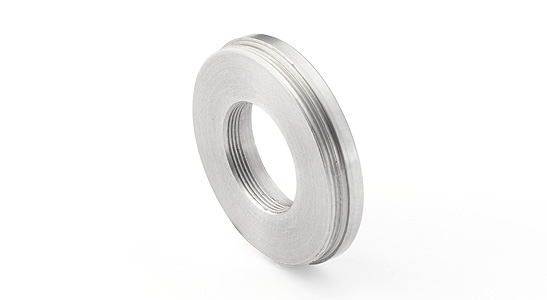
The GRAS RA0017 adapter is intended for the situation when you have a GRAS 1/2″ preamplifier and wish to extend its use to also work with a GRAS 1″ microphone. Ideally, the microphone cartridge and preamplifier should have the same diameter for a minimum acoustical influence. To install, just screw the microphone cartridge to the adapter. Then screw the preamplifier onto the adapter.
Design
The GRAS RA0017 is a “nut” with inner threading for the preamplifier and outer threading for the microphone. The adapter is made of high quality stainless steel. The microphone cartridge and preamplifier interconnects directly and thereby no attenuation is introduced. This means that the characteristics of the microphone are maintained.
Alternatives
In setups with less size restrictions then consider the GRAS RA0073.
GRAS RA0018 20 dB Attenuator for prepolarized 1/2″ microphones
The GRAS RA0018 is a 20 dB attenuator for inserting between a 1/2″ prepolarized microphone and preamplifier. It will attenuate the output signal of the microphone by 20 dB in order to avoid overloading the preamplifier. The RA0018 is useful when measuring very high sound pressure levels using a preamplifier with limited dynamic range. The RA0018 will work properly only with prepolarized microphones. For externally polarized microphones, use the RA0016.
Design
For precision measurements, the actual combination of microphone, attenuator and preamplifier should be calibrated with a precision calibrator like GRAS 42AA Pistonphone. The attenuation of the microphone signal is obtained by a capacitive voltage divider, and depends on both the microphone capacity and the preamplifier input impedance.
GRAS RA0019 Adapter for 1/4″ microphone and 1/2″ preamplifier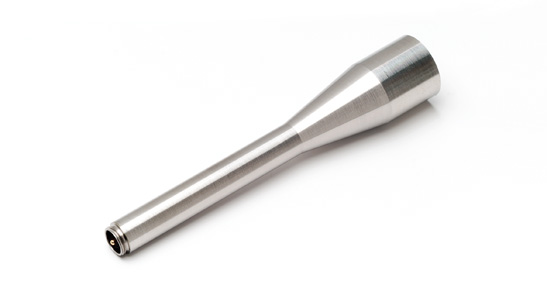
The GRAS RA0019 is an adapter for using a 1/4″ microphone with a 1/2″ preamplifier. Its influence on the acoustic field is minimal. To reduce attenuation of the microphone signal, the guard ring of the preamplifier is extended through the RA0019.
GRAS RA0020 1/2″ Nosecone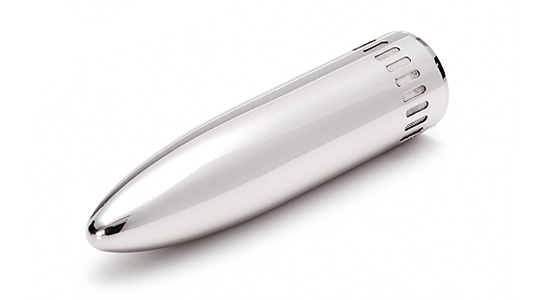
Proper use of a microphone with a nosecone is to aim the nosecone towards the air flow. The nosecone has an inner threading and is installed by replacing the protection grid with the nosecone.
Design
When a microphone is placed in a laminar flow, turbulence is created which in turn results in unwanted pressure variations on the diaphragm. By installing a nosecone, the pressure variations, caused by the turbulence starting at the stagnation point, are moved as far away from the diaphragm as possible. Theoretically this supports a “longer-the-better design”, but in practice it is a compromise between practical size and obtaining a streamlined shape.
The design of our nosecones is based on requirements from the National Aeronautical Laboratory of the Netherlands (NLR), who investigated the classical sharp-tipped nosecone and concluded that with this design, the stagnation point is unpredictable i.e. the turbulence could emerge at any point on the surface and cause unwanted pressure variations, which could reach the diaphragm.
A new design with a blunt tip was developed. This forces a predictable stagnation point already at the tip. As this turned out to be a success and a great improvement compared to the classical design with a sharp tip, this is now specified in the NLR requirement TP 96320. The surface is high-gloss polished to further improve the aerodynamic performance.
If the turbulence reduction obtained by the nosecone is not sufficient or you have space restrictions, we suggest that you look for GRAS surface microphones and our new flush-mount microphone concept. These alternatives are also relevant if you experience flutter problems with microphones provided with nosecones.
If you need to make sound pressure measurements in a free-field with air coming from many different directions, we suggest you look for GRAS windscreens.
Alternatives
An aluminum version GRAS RA0020-A is available for use where weight is an issue.
GRAS RA0020-A 1/2″ Nosecone, lightweight
Proper use of a microphone with a nosecone is to aim the nosecone towards the air flow. The nosecone has an inner threading and is installed by replacing the protection grid with the nosecone.
Design
When a microphone is placed in a laminar flow, turbulence is created which in turn results in unwanted pressure variations on the diaphragm. By installing a nosecone, the pressure variations, caused by the turbulence starting at the stagnation point, are moved as far away from the diaphragm as possible. Theoretically this supports a “longer-the-better design”, but in practice it is a compromise between practical size and obtaining a streamlined shape.
The design of our nosecones is based on requirements from the National Aeronautical Laboratory of the Netherlands (NLR), who investigated the classical sharp-tipped nosecone and concluded that with this design, the stagnation point is unpredictable i.e. the turbulence could emerge at any point on the surface and cause unwanted pressure variations, which could reach the diaphragm.
A new design with a blunt tip was developed. This forces a predictable stagnation point already at the tip. As this turned out to be a success and a great improvement compared to the classical design with a sharp tip, this is now specified in the NLR requirement TP 96320. The surface is high-gloss polished to further improve the aerodynamic performance.
If the turbulence reduction obtained by the nosecone is not sufficient or you have space restrictions, we suggest that you look for GRAS surface microphones and our new flush-mount microphone concept. These alternatives are also relevant if you experience flutter problems with microphones provided with nosecones.
If you need to make sound pressure measurements in a free-field with air coming from many different directions, we suggest you look for GRAS windscreens.
Alternatives
A stainless steel version GRAS RA0020 is available.
GRAS RA0022 1/4″ Nosecone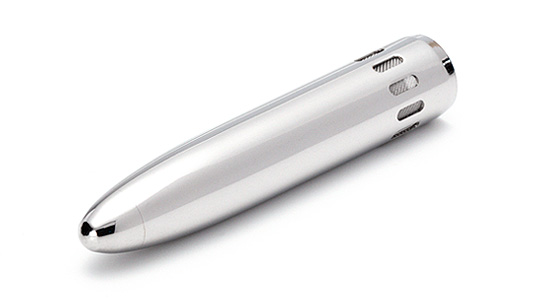
Proper use of a microphone with a nosecone is to aim the nosecone towards the air flow. The nosecone has an inner threading and is installed by replacing the protection grid with the nosecone.
Design
When a microphone is placed in a laminar flow, turbulence is created which in turn results in unwanted pressure variations on the diaphragm. By installing a nosecone, the pressure variations, caused by the turbulence starting at the stagnation point, are moved as far away from the diaphragm as possible. Theoretically this supports a “longer-the-better design”, but in practice it is a compromise between practical size and obtaining a streamlined shape.
The design of our nosecones is based on requirements from the National Aeronautical Laboratory of the Netherlands (NLR), who investigated the classical sharp-tipped nosecone and concluded that with this design, the stagnation point is unpredictable i.e. the turbulence could emerge at any point on the surface and cause unwanted pressure variations, which could reach the diaphragm.
A new design with a blunt tip was developed. This forces a predictable stagnation point already at the tip. As this turned out to be a success and a great improvement compared to the classical design with a sharp tip, this is now specified in the NLR requirement TP 96320. The surface is high-gloss polished to further improve the aerodynamic performance.
If the turbulence reduction obtained by the nosecone is not sufficient or you have space restrictions, we suggest that you look for GRAS surface microphones and our new flush-mount microphone concept. These alternatives are also relevant if you experience flutter problems with microphones provided with nosecones.
If you need to make sound pressure measurements in a free-field with air coming from many different directions, we suggest you look for GRAS windscreens.
GRAS RA0063 Adapter for 1/8″ microphone and 1/4″ preamplifier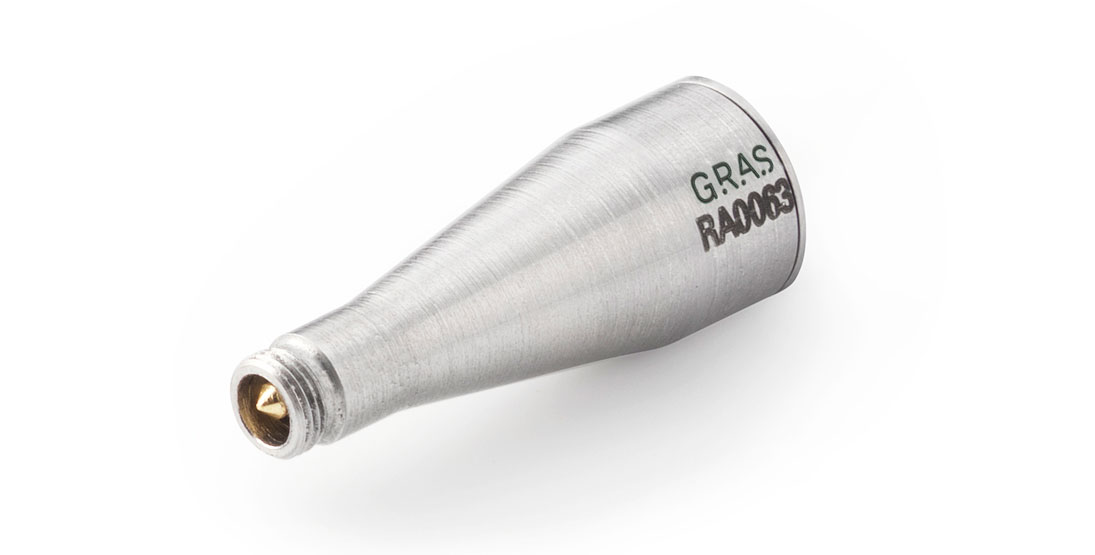
The GRAS RA0063 adapts a 1/8″ microphone cartridge to a 1/4″ preamplifier. To reduce the attenuation of the signal, the guard ring of the preamplifier is extended through the RA0063.
Alternatives
For improved high-frequency performance by reducing diffraction effects, see the extended length adapter RA0082.
GRAS RA0067 Transmitter Adapter for 1/2″ microphones
This accessory makes a prepolarized 1/2″ microphone cartridge behave like an electrostatic loudspeaker which, in a coupler, has a frequency response as good as when used as a microphone. It takes a calibration signal directly from a signal generator. The GRAS RA0067 has a BNC connector.
GRAS RA0073 Adapter for 1″ microphone and 1/2″ preamplifier
The GRAS RA0072 adapter is intended for the situation when you have a GRAS 1/2″ preamplifier and wish to extend its use to also work with a GRAS 1″ microphone. To install, just screw the microphone cartridge to the adapter. Then screw the preamplifier onto the adapter.
Design
The GRAS RA0017 is designed for a minimum acoustical influence on the measurement. It has an inner threading for the preamplifier and outer threading for the microphone. The adapter is made of high quality stainless steel. The microphone cartridge and preamplifier interconnects directly and thereby no attenuation is introduced. This means that the characteristics of the microphone are maintained.
Alternatives
In setups with size restrictions then consider the GRAS RA0017.
GRAS RA0077 NBS 9-A Coupler adapter for 1/2” microphone
Note: Only for GRAS NBS Coupler RA0075 and GRAS 43AF enabling them to fulfil the standard using a 1/2” microphone.
One opening has an inner thread which equals a 1/2” grid thread 12.70-60 UNS-2. The other opening has an inner thread which equals a 1” grid thread 23.11-60 UNS-2.
GRAS RA0081 Special tool for gripping 1/2” microphones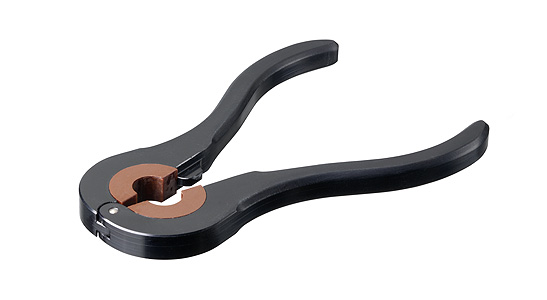
The GRAS RA0081 is a tool for gripping a 1/2″ microphone cartridge safely when unscrewing its protection grid. It has a pair of soft, semi-circular jaws.
GRAS RA0082 Adapter for 1/8″ microphone and 1/4″ preamplifier (long version)
The GRAS RA0082 is an adapter for using a 1/8″ microphone with a 1/4″ preamplifier. It can be used with any standard 1/8″ microphone and 1/4″ preamplifier such as the GRAS 26AC. Its extended length improves high-frequency performance by reducing diffraction effects.
Alternatives
To reduce attenuation, see the short adapter RA0063.
GRAS RA0086 Transmitter Adapter for 1/4″ microphones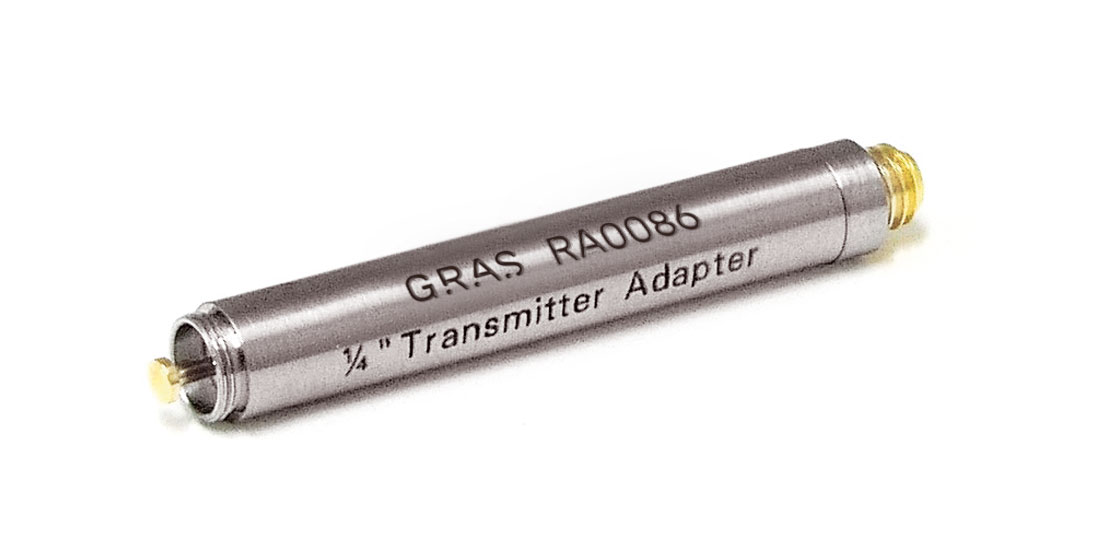
This accessory makes an externally polarized 1/4″ microphone cartridge (typically a GRAS 40BP) behave like an electrostatic loudspeaker which, in a coupler, has a frequency response as good as when used as a microphone. It takes a calibration signal directly from a signal generator. The GRAS RA0086 has a Microdot connector.
GRAS RA0091 Insulated 1/2” microphone protection grid
RA0091 fits 1/2″ microphones. It replaces the existing grid. The RA0091 is typically used when in the 43AD the GR0336 Snap Coupling has been replaced with RA0085 Insulated Coupling for artificial ear.
GRAS RA0092 Rain-protection Cap for array microphones
You can mount either this rain-protection cap or wind screen GRAS AM0364 on array microphones. It also fits QC microphones 40PP and 40PK.
GRAS RA0095 Dehumidifier for 1” microphones
For use when humidity levels are high and only with a rear-vented 1” microphone. An indicator placed on the side of the dehumidifier shows when it needs to be dried out before further use. In the case of the GRAS 40EH 1” Microphone used in the GRAS 40HF Low-noise Level Microphone System, please order only at the time of ordering a GRAS 40HF.
GRAS RA0116 Adapter for 1/2″ microphone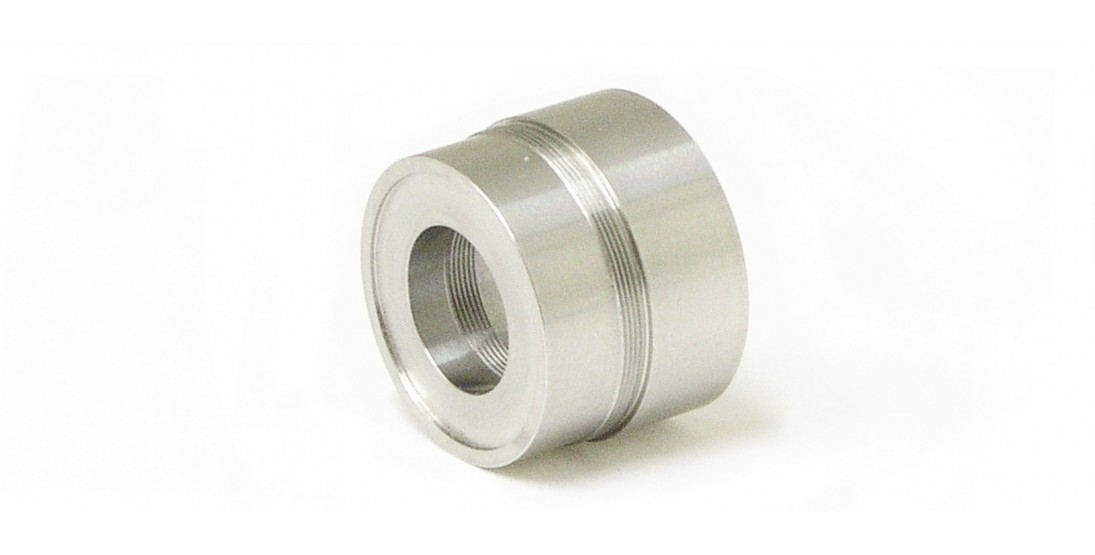
Adapts a 1/2″ microphone (without grid) into 1” microphone dimensions (with grid). Designed for GRAS RA0113 IEC 60126 2cc Coupler for 1” Pressure-field Microphone. This adapter is not for GRAS RA0038. The adapter has a small front volume to obtain the same effective volume as a 1″ microphone.
GRAS RA0117 Coupler adapter for 1/2” to 1/4” microphone
When screwed onto a 1/4″ microphone (protection grid removed) an outer threading corresponding to the one on a 1/2″ microphone is obtained.
GRAS RA0118 Attenuator for 1/4″ microphones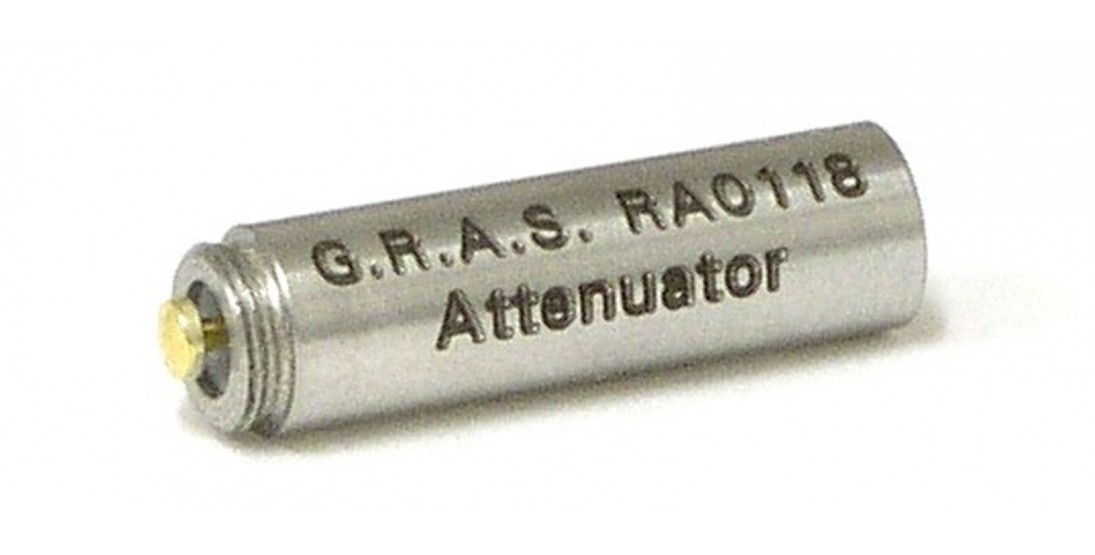
The RA0118 is an attenuator for inserting between a 1/4″ prepolarized or externally polarized microphone cartridge and preamplifier. It attenuates the output signal of the microphone by approximately 16 dB in order to avoid overloading the preamplifier or following analyzer. The RA0118 is useful when measuring very high sound pressure levels using a preamplifier or analyzer with limited dynamic range.
GRAS RA0122 Random-incidence corrector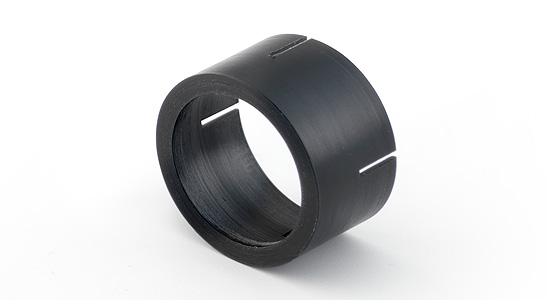
The GRAS RA0122 is a Random-incidence corrector which is for use with 1/2” Free-field microphones when measuring noise according to ANSI requirements. To install, just push it over the 1/2″ microphone cartridge until stop. It can not be combined with nosecone or rain protection cap.
GRAS RA0127 Rain-protection cap for 1/4” microphones
The rain protection cap RA0127 fits 1/4″ microphones. A microphone protection grid (GA0006) which has a central matching threaded stud is included. The threaded stud is a requirement for mounting the rain-protection cap. Replace the protection grid on the microphone with the one included.
GRAS RA0131 Rain-protection cap for 1/2” microphones
The GRAS RA0131 Rain protection cap fits 1/2″ microphones. A microphone protection grid (AI0019) which has a central matching threaded stud is included. The threaded stud is a requirement for mounting the rain-protection cap. Replace the protection grid on the microphone with the one included.
GRAS RA0132 Dehumidifier for 1/2” microphones
The dehumidifier contains silica gel and removes humidity from the air in the microphone. When being saturated silica gel changes colour from orange/amber to white. The humidity removing properties are regained by drying it out. To to this, heat it for some hours at 100 degrees Celcius (or longer at lower temperature).
GRAS RA0173 1/8” Nosecone
Proper use of a microphone with a nosecone is to aim the nosecone towards the air flow. The nosecone has an inner threading and is installed by replacing the protection grid with the nosecone.
Design
When a microphone is placed in a laminar flow, turbulence is created which in turn results in unwanted pressure variations on the diaphragm. By installing a nosecone, the pressure variations, caused by the turbulence starting at the stagnation point, are moved as far away from the diaphragm as possible. Theoretically this supports a “longer-the-better design”, but in practice it is a compromise between practical size and obtaining a streamlined shape.
The design of our nosecones is based on requirements from the National Aeronautical Laboratory of the Netherlands (NLR), who investigated the classical sharp-tipped nosecone and concluded that with this design, the stagnation point is unpredictable i.e. the turbulence could emerge at any point on the surface and cause unwanted pressure variations, which could reach the diaphragm.
A new design with a blunt tip was developed. This forces a predictable stagnation point already at the tip. As this turned out to be a success and a great improvement compared to the classical design with a sharp tip, this is now specified in the NLR requirement TP 96320. The surface is high-gloss polished to further improve the aerodynamic performance.
If the turbulence reduction obtained by the nosecone is not sufficient or you have space restrictions, we suggest that you look for GRAS surface microphones and our new flush-mount microphone concept. These alternatives are also relevant if you experience flutter problems with microphones provided with nosecones.
If you need to make sound pressure measurements in a free-field with air coming from many different directions, we suggest you look for GRAS windscreens.
GRAS RA0190 Right-angled (90º) Adapter for 1/2″ Microphone and 1/2″ Preamplifier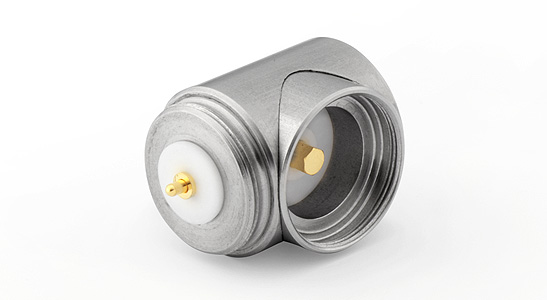
The RA0190 is a right-angle adapter for using a 1/2″ microphone with a 1/2″ preamplifier. It can be used with any standard 1/2″ microphone and 1/2″ preamplifier. The RA0190 could be useful in situations where the microphone has to be flush mounted on a wall.
Alternatives
Right-angled adapter for a 1/4″ preamplifier and a 1/2″ microphone is the RA0001.
Right-angled adapter for a 1/4″ preamplifier and a 1/4″ microphone is the RA0006.
GRAS RA0302 Removal Tool for 1/2″ and 1/4″ Flush-mount Microphones
Once mounted, a flush-mount microphone can be difficult to remove. The GRAS RA0302 Removal Tool for GRAS 1/2″ and 1/4″ flush-mount microphones makes it safe to remove the microphone without damage to structure, microphone housing or cable.
Additional information
| Producent | GRAS |
|---|














